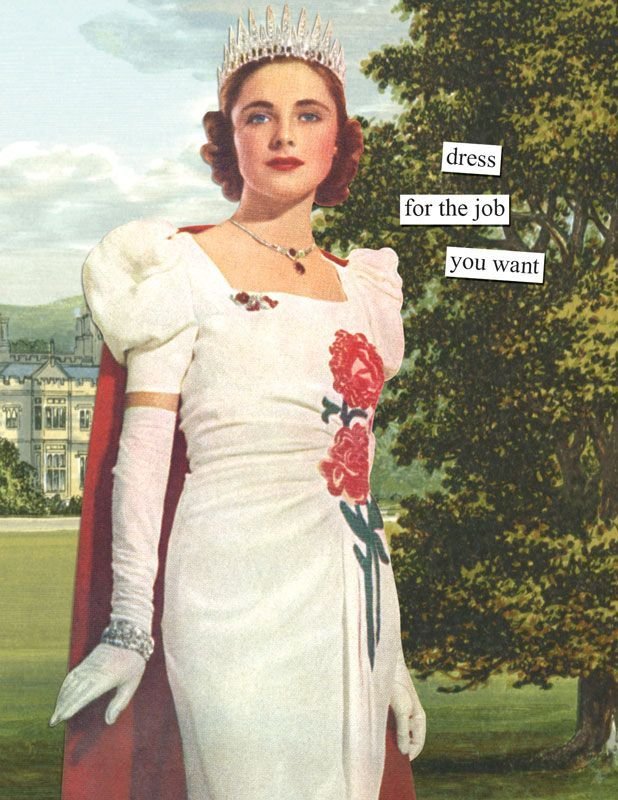Dear Etiquetteer:
Very timely column [about elegance] because only yesterday I was having a conversation with a colleague about appropriate work attire, especially for the younger generation. Perhaps I’m just getting old and (more) stuffy, but whatever happened to dressing appropriately when your job is literally to be the first face of the organization for the public? I work at a museum and one of my responsibilities is to raise the level of professionalism there (if you can imagine that). The staff greeting the public are in their twenties and come dressed in any manner of less than casual attire, as in pajama bottoms and slippers, I kid you not. Shorts, T-shirts, flip flops, high midriff shirts (do I really want to know how you adorn you belly button?). What is happening??? Any suggestions?
Dear Aghast:
What’s happening is the end of civilization as we know it; what you’re witnessing is just one tiny facet of it. Improving the appearance and demeanor of your front-of-house colleagues could involve two things: information and a museum-wide dress code, which could involve a front-of-house uniform.
Change is the only constant, as we know, and Etiquetteer is not thinking about those old theatre usher uniforms from a century ago. Those trim, bright red gold-braided jackets and jaunty pillbox hats look so charming, but they don’t suit the times, not to mention the figures of anyone over the age of 12. With even the housemaids at the White House wearing polo shirts on duty*, why not invest in a bale of them for your staff embroidered with your museum’s logo? Then draft a company-wide dress code about what may, and may not, be worn with them. Consider pullovers or sweaters for the colder months, too.
Getting your staff invested in the museum’s mission and visitor experience will be an important part of this process. How do they impact how visitors perceive the museum? Do they know that? Sharing good feedback from visitors, bringing them into plans for the future (for instance, new exhibitions), soliciting their opinions for improvements to the museum experience — in short, making them feel engaged will reinforce how they make a difference, and how important they feel their jobs are.
Etiquetteer will never not love Anne Taintor’s Dress for the job you want.
Positions like these are not seen as lifetime career choices, and Etiquetteer is sure that all your young colleagues expect to move into different fields at some point. Changing the impression of the job from a temporary gig to a career steppingstone could make a difference in how they choose to present themselves. The old advice “Dress for the job you want” is still good advice. You may have to have a few individual conversations, starting with the worst offenders, to find out what their own goals are. This could help you steer them into making better choices for a professional self-presentation that will also benefit the museum.
Etiquetteer wishes you patience and resolve as you embark on this endeavor, and a corps of crisp and Perfectly Proper colleagues.
*This surprising fact learned from The Residence: Inside the Private World of the White House, by Kate Andersen Brower (2016).


